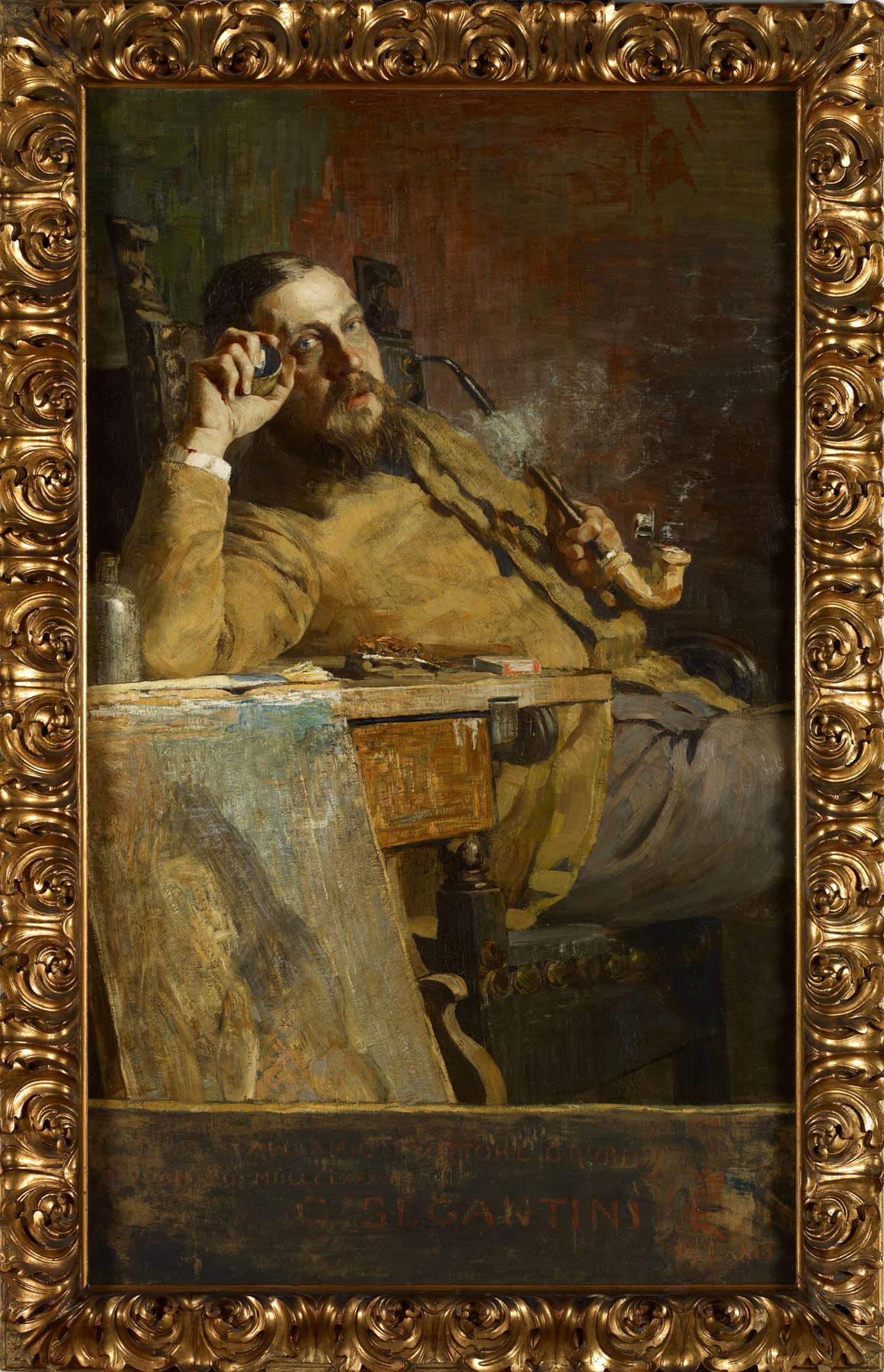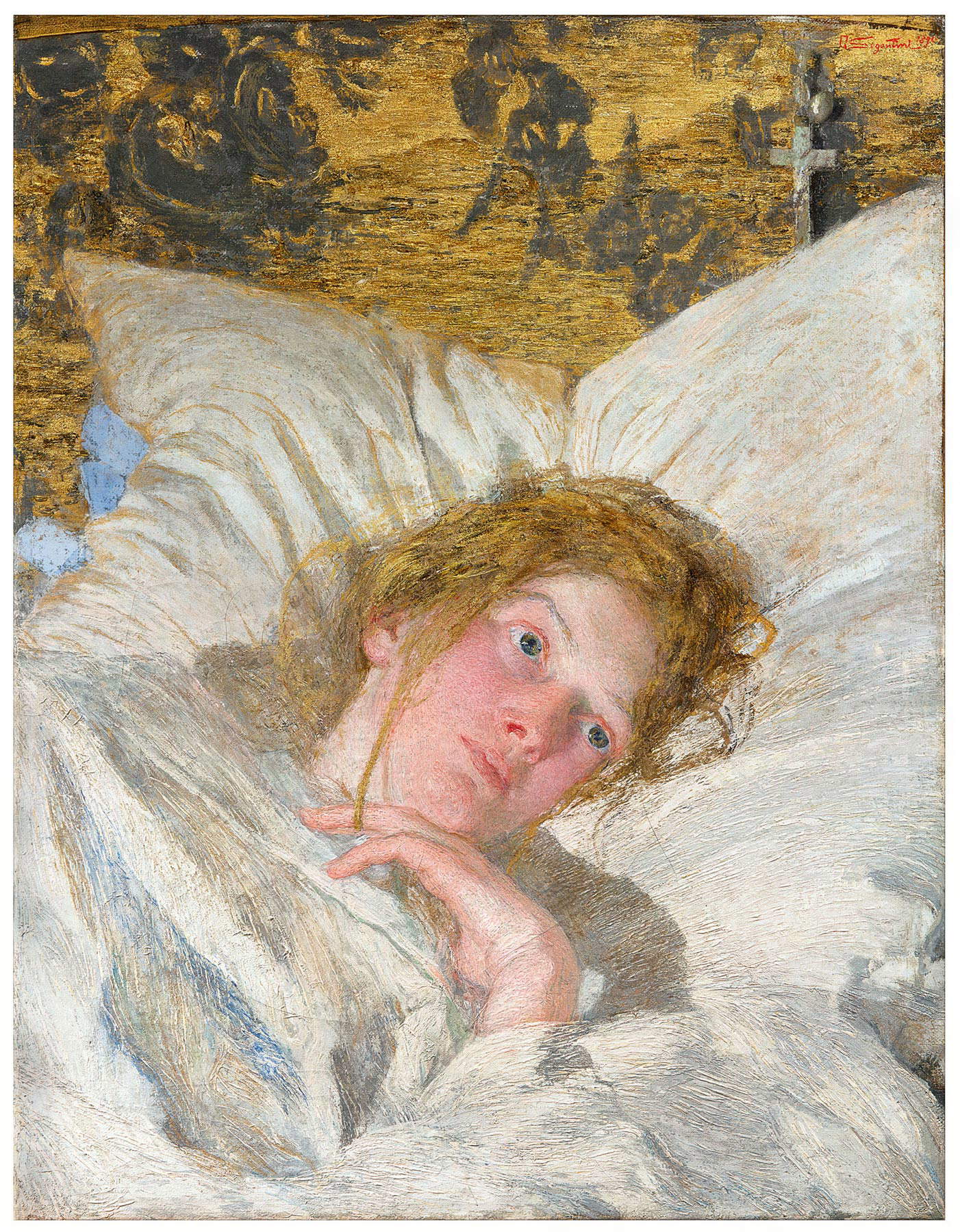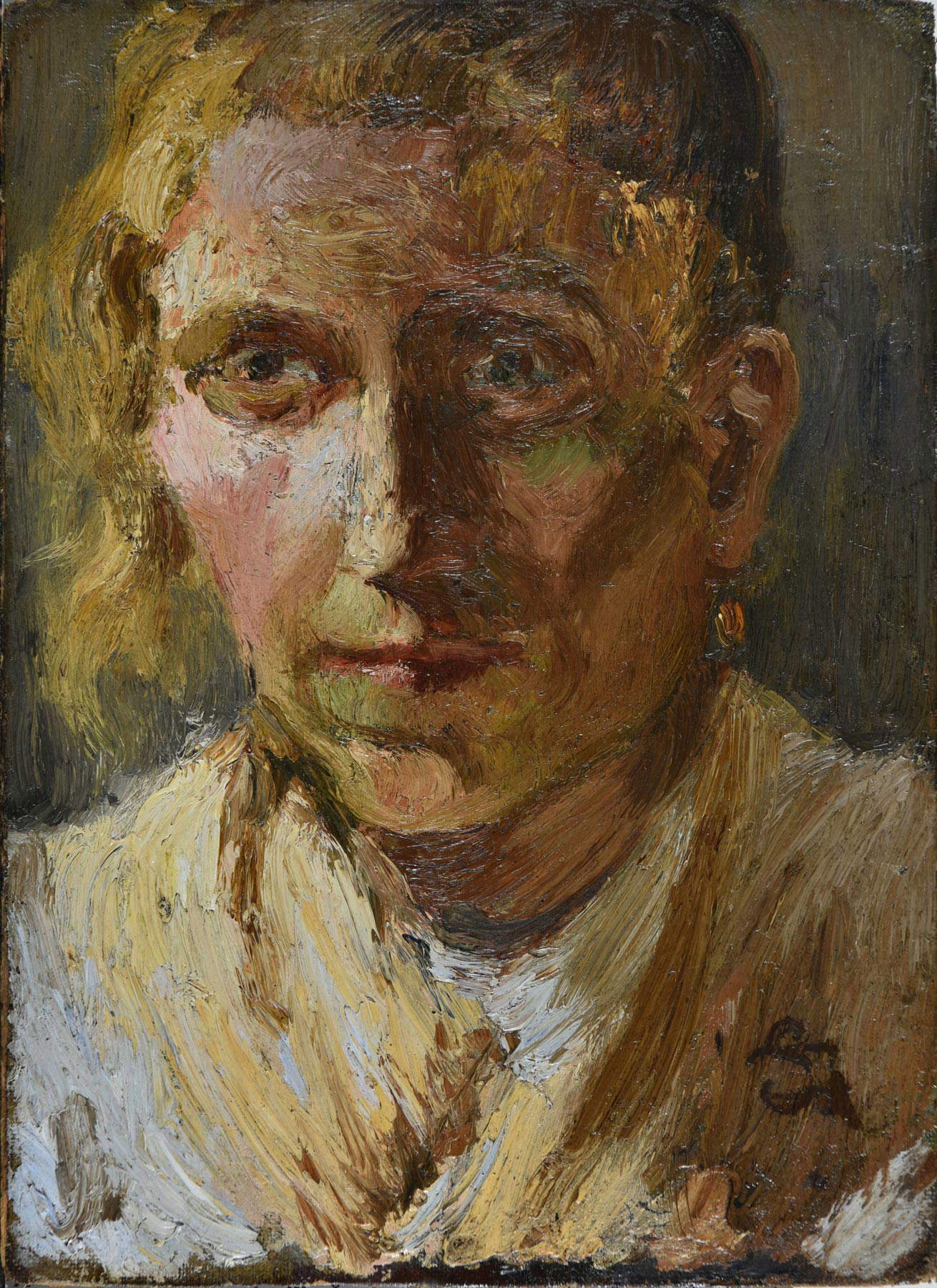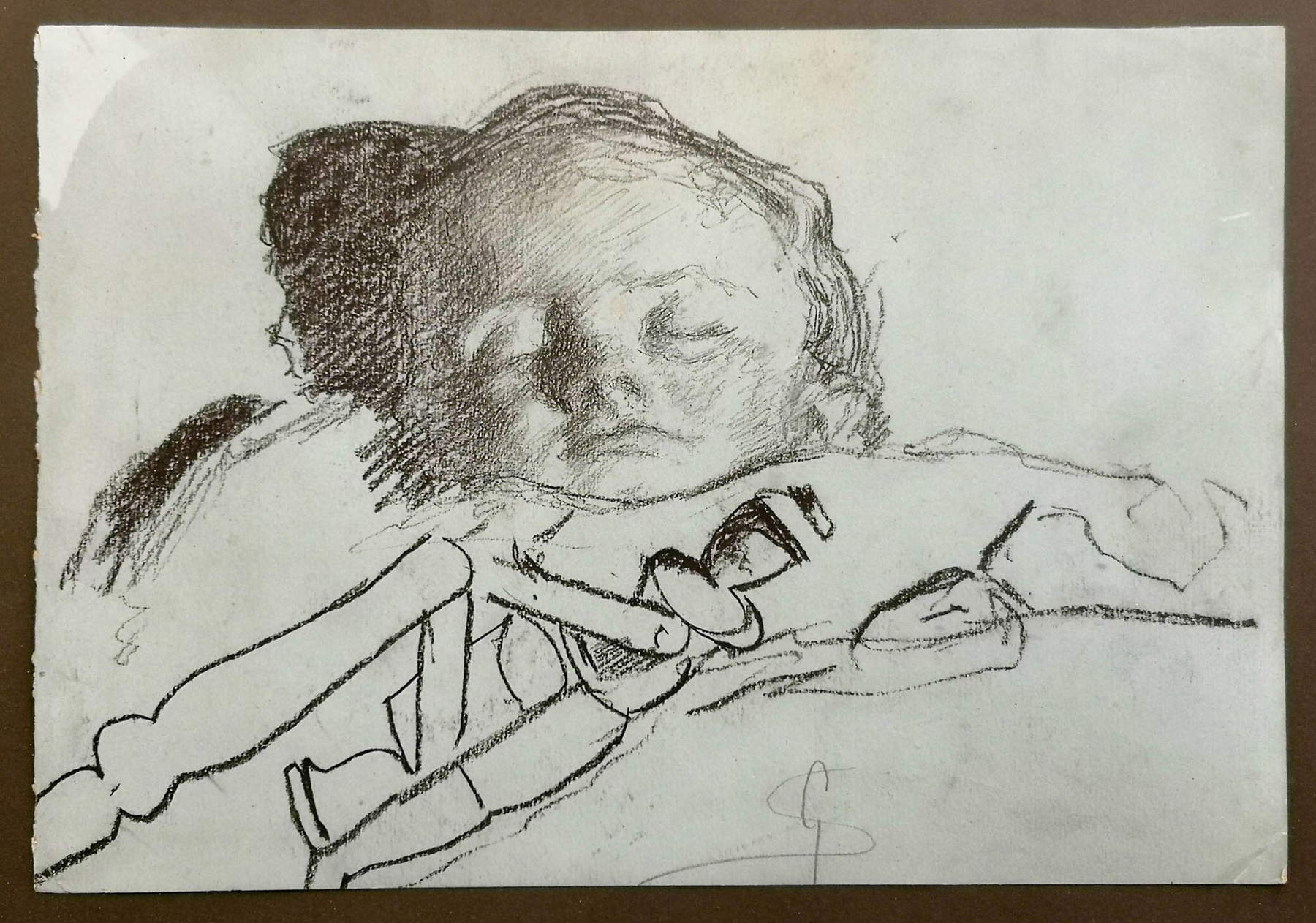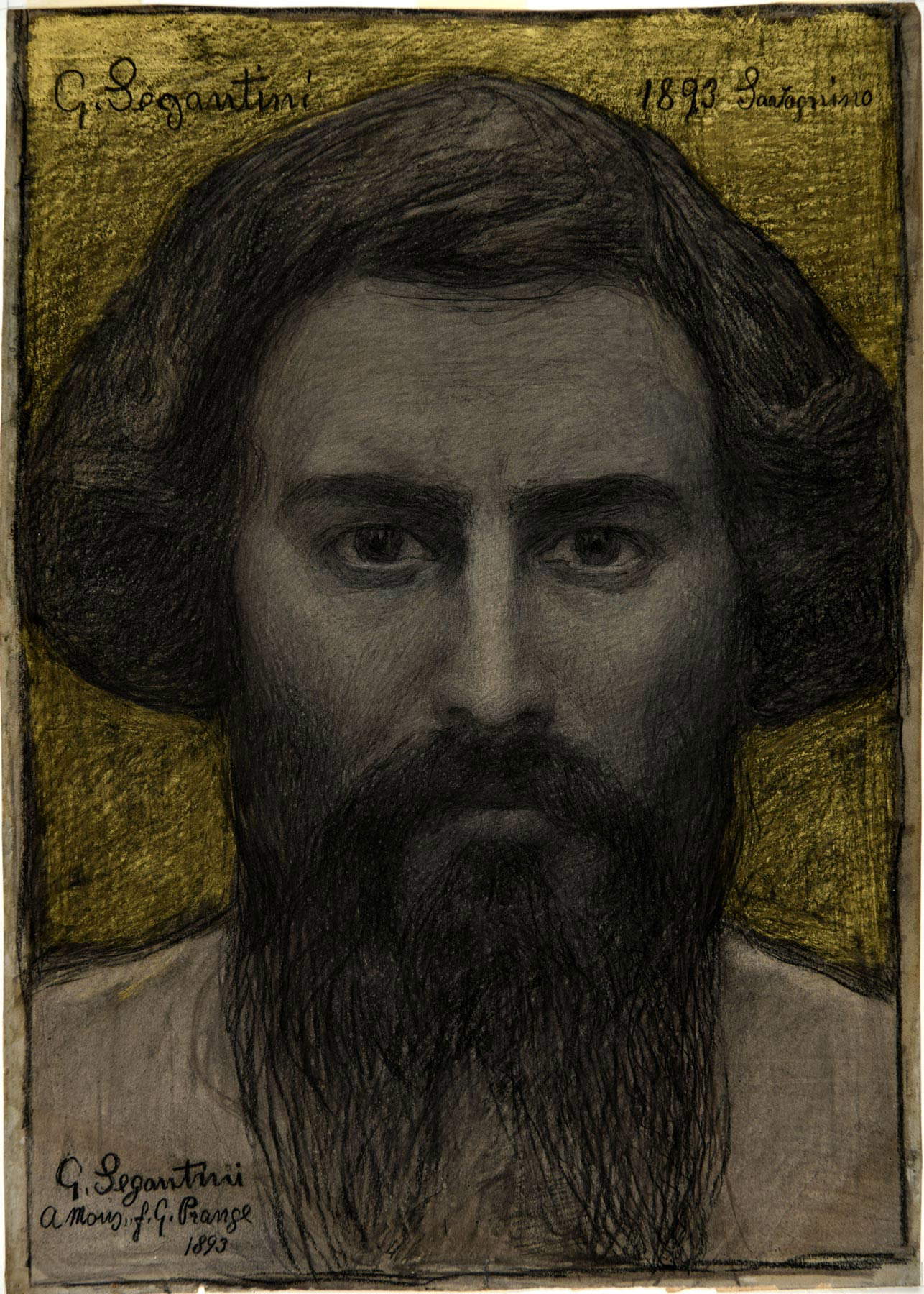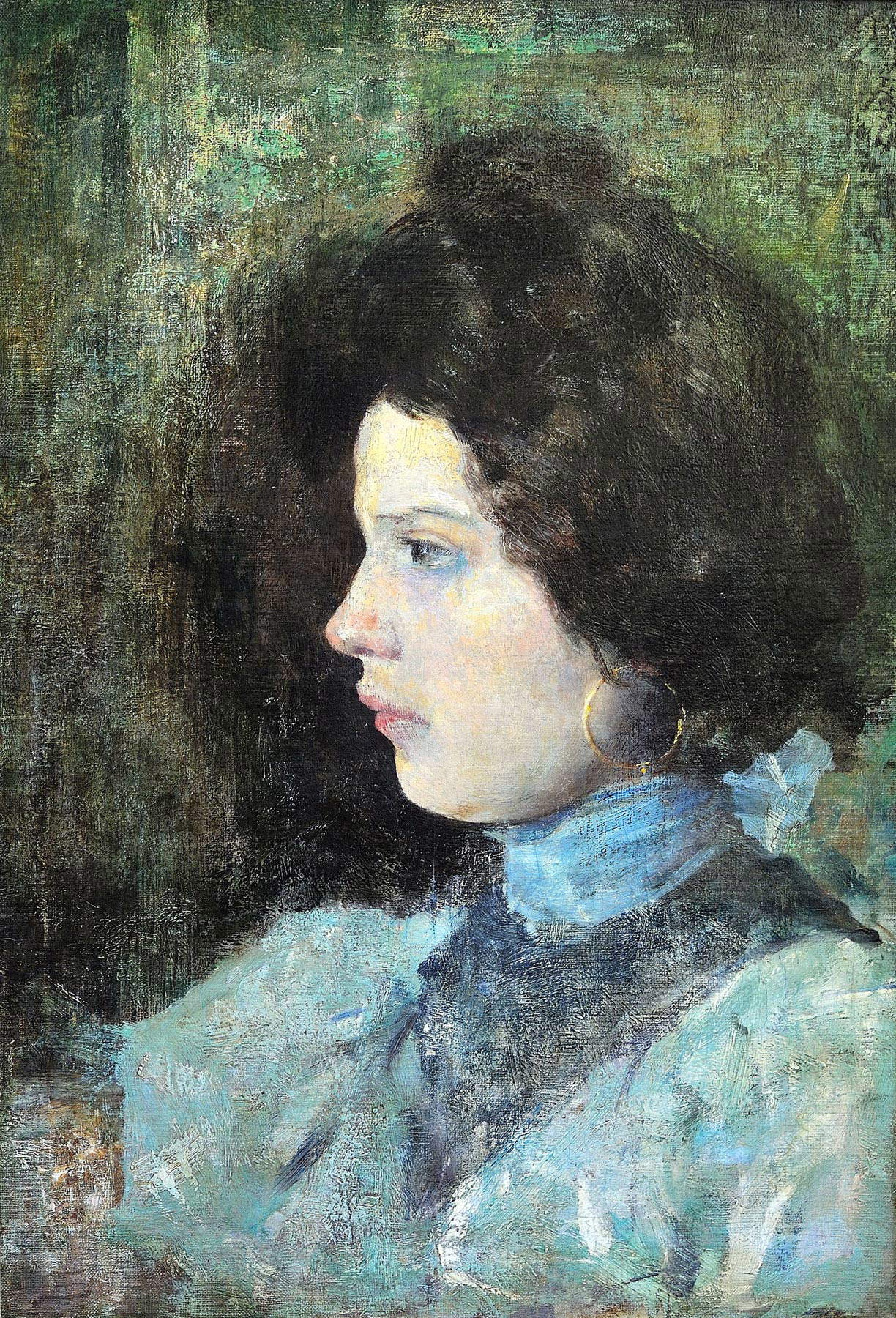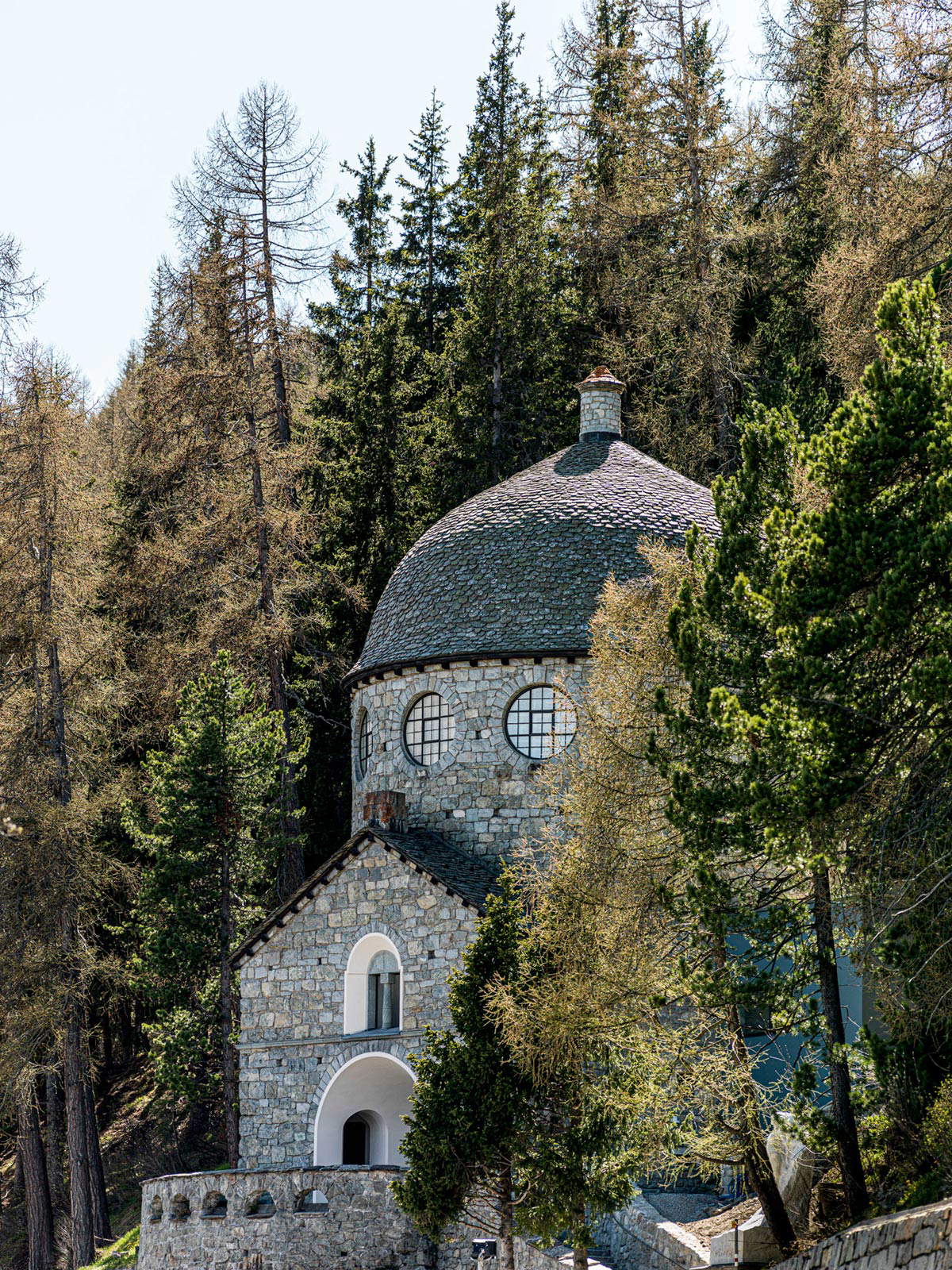by Redazione , published on 29/05/2021
Categories: Exhibitions
/ Disclaimer
From June 1 to October 20, 2021, the Segantini Museum in Sankt Moritz, Switzerland, will host the first-ever exhibition on the portraiture of Giovanni Segantini.
Kick off the first-ever exhibition on the portraiture of one of the greatest masters of the second half of the 19th century, Giovanni Segantini (Arco, 1858 - Pontresina, 1899). The exhibition, titled Giovanni Segantini master of portraiture, is welcomed June 1 to Oct. 2021 at the Segantini Museum in Sankt Moritz, Switzerland. The exhibition, curated by Annie-Paule Quinsac, author of the catalog raisonné of Segantini, and Mirella Carbone, director of the Engadine museum, investigates for the first time Giovanni Segantini’s career as a portraitist.
The artist, an excellent author of landscapes and scenes of peasant life, considered the portrait to be the noblest of pictorial genres, since, as he had to say, “it has as its objective the exploration of the human face [...] The portrait is the study that with the greatest simplicity of means encloses the most effective word of Art in the expression of the living form.” The exhibition presents twenty-two portraits and self-portraits (16 paintings and 6 drawings), from international public and private collections, made throughout Segantini’s career, from his beginnings in Milan (1879) to his untimely death in the Upper Engadine (1899). These works allow visitors to follow the evolution of Segantini’s portraiture from mirror to symbol, that is, the gradual transformation of the way the artist understood this genre: starting from his youthful works, in which he pursued a more or less faithful rendering of physiognomic features, he arrived at the conception of the portrait as a vehicle for expressing an idea or a symbol.
The exhibition opens with some important works from the early Milanese period, such as the fascinating portrait of Leopoldina Grubicy (1880), sister of Vittore Grubicy de Dragon, an art dealer and friend of the artist. At the time of the pose the young woman had just been widowed with two children. Segantini was able to render with great expressive force the face of aristocratic elegance of his model, in which the eyes, which focus attention, express infinite sadness. The Milan works are followed by a selection of works made during his stay in Brianza (1881-1886), including the touching drawing of little Gottardo (1885), the artist’s eldest son, asleep after undergoing an operation. The effigy of the peasant woman Maria Paredi dates from 1886, which, thanks to the violent, thick, stringy brushstroke, could be described as almost expressionist. Soon after moving to Savognin, in the canton of Grisons, Segantini produced one of the finest examples of his talent as an “explorer of the human face.” It is the monumental portrait of Vittore Grubicy (1887), in which he depicts his friend on a strongly constructed foreground, surrounded by some freshly covered canvases, in an effort to define his work as an art dealer. Grubicy’s face, told in an intimate, relaxed manner, captured during a discussion with the painter, reveals a reserved and generous personality. Just three years later is the symbolist elegy Rose Petal (1890), the last depiction of his companion Bice Bugatti, a masterpiece of Segantini portraiture, repainted over a work entitled Galloping Tisi (1881). The painter decided here to erase the previous, mournful message of illness and death, replacing it with a symbol of life, masterfully rendered in part through the use of a technical experimentation, rooted in the Renaissance: it involves the use of powder and gold leaf, to achieve an iconic valence, which coexists with soft effects of strong sensuality.
It is through the self-portraits that the metamorphosis from mirror to symbol is even more unequivocally manifested; the shortlist of six works on display, the best-known of his production, ranges from 1879 to 1898, from the first self-portrait, a realist work that reflects the charm of the young artist’s features in his twenties, to the last, which presents a prophet’s face. Particularly striking is that of 1882, powerfully hinging on the effigy/death relationship, a macabre image in which the artist paints himself with strong theatricality, hallucinated, sword at his throat, ready for the sacrifice of those who immolate themselves to the ideal of a new cult. The palette also conforms to this message, with somber tones contrasting with the bright luminosity of other coeval portraits. A further masterpiece is the 1895 self-portrait, in which symbolism transcends the mimetic rendering of physiognomy toward Byzantine Christ Pantocrator-like likenesses, dominating the chain of “his” mountains. Thanks to the monochrome graphism, broken only by touches of gold and white chalk, the image becomes iconic, while the physicality of color would have affected its sense of sacredness.
A bilingual (Italian and German) catalog, published by Hatje Cantz publishing house, accompanies the exhibition. Side events include guided tours (in German), led by Mirella Carbone, to be held on Sunday, July 4, Sunday, Aug. 8 and Sunday, Sept. 5, at 5 p.m. Guides in Italian are possible upon request. For all information you can visit the Segantini Museum website.
Biography of Giovanni Segantini
Segantini was born Jan. 15, 1858, in Arco, in the province of Trento, then part of the Austro-Hungarian Empire. He attended the Brera Academy in Milan and achieved his first success with the painting The Choir of the Church of St. Anthony in Milan (1879). In 1881 Segantini left Milan and moved with his partner Bice Bugatti to Brianza. The move away from the city and the academy with its canons and obligatory mythological and religious subjects was a choice of principle. At that time Brianza was a rural region, Segantini focused his study on the daily life of peasants and shepherds. In 1882 his first son, Gottardo, was born; Alberto, Mario and Bianca followed.
In August 1886 the painter, after a long exploratory trip, settled with his family in Savognin, a mountain farming village in Oberhalbstein (canton of Grisons). In the winter of 1886-1887 his art dealer, Vittore Grubicy, visited him and informed his protégé about the most modern artistic trends in France. However, it was mainly the mountain landscape with its intense light that led Segantini to a new pictorial language. Over time he enriched the meticulously observed alpine landscapes with symbolic content to create allegorical visions of rare luminosity. His move away from genre realist painting came at a time of crisis in realism throughout Europe. After eight years in Savognin, Giovanni Segantini moved to the Engadine with his family. In 1894 he rented the Chalet Kuoni in Maloja. Here, too, the artist, whose paintings were among the most expensive of the time, maintained the luxurious lifestyle of the Milanese upper middle class, thus quickly squandering his considerable earnings. He spent the winter months in Soglio in the Bergell Valley. At the age of 41, Segantini died unexpectedly of peritonitis on September 28, 1899 on the Schafberg mountain above Pontresina, while working on the central painting of his
Nature Triptych.
 |
| Giovanni Segantini, Portrait of Leopoldina Grubicy (1880; oil on canvas; Winterthur, Stiftung für Kunst, Kultur und Geschichte) |
 |
| Giovanni Segantini, Portrait of Vittore Grubicy de Dragon (1887; oil on canvas; Leipzig, Museum für bildende Künste) |
 |
| Giovanni Segantini, Rose Petal (1890; oil on canvas; Private collection) |
 |
| Giovanni Segantini, Grisons Costume (1887; oil on canvas, 54.5 x 78.5 cm; Otto Fischbacher Giovanni Segantini Stiftung, on deposit at the Segantini Museum in St. Moritz) |
 |
| Giovanni Segantini, Portrait of Mrs. Maria Paredi (ca. 1886; oil on canvas on cardboard; St. Moritz, Segantini Museum) |
 |
| Giovanni Segantini, Gotthard after Operation (ca. 1885; pencil and charcoal on paper; Private collection) |
 |
| Giovanni Segantini, Self-Portrait (1895; charcoal and traces of gold dust on canvas; St. Moritz, Segantini Museum) |
 |
| Giovanni Segantini, Self-Portrait (1893; Conté pencil on gray paper, 35.5 x 25 cm; Otto Fischbacher Giovanni Segantini Stiftung, on deposit at Segantini Museum, St. Moritz) |
 |
| Giovanni Segantini, Portrait of Young Lady in Profile (1880; oil on canvas, 61 x 42 cm; Poschiavo, Ernesto Conrad Foundation) |
 |
| Segantini Museum. Photo by Andrea Badrutt |
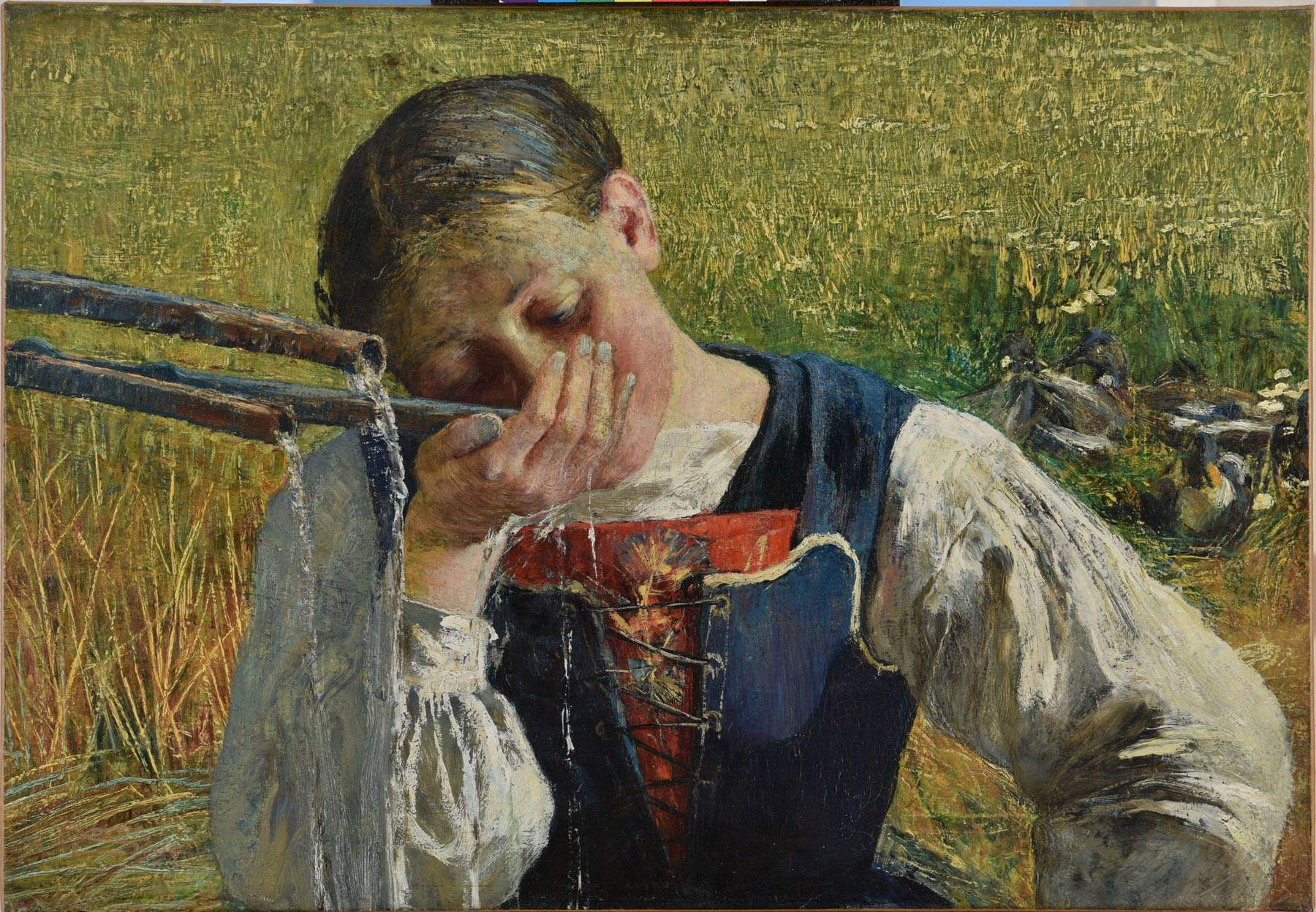 |
| In Switzerland the first-ever exhibition on Giovanni Segantini's portraiture |
Warning: the translation into English of the original Italian article was created using automatic tools.
We undertake to review all articles, but we do not guarantee the total absence of inaccuracies in the translation due to the program. You can
find the original by clicking on the ITA button. If you find any mistake,please contact us.

